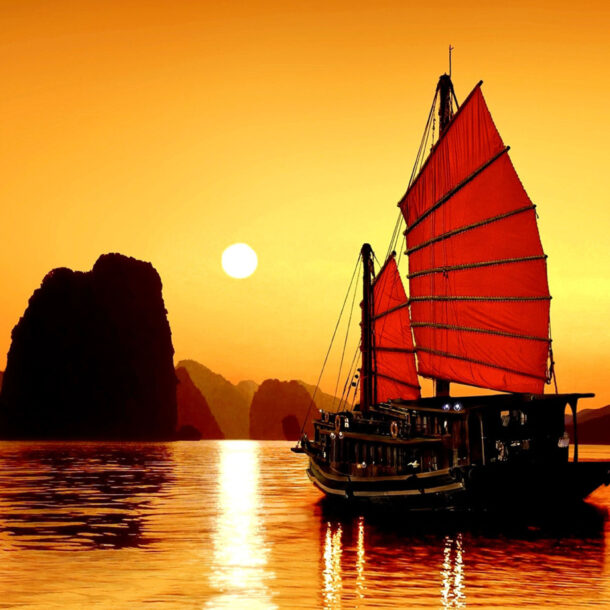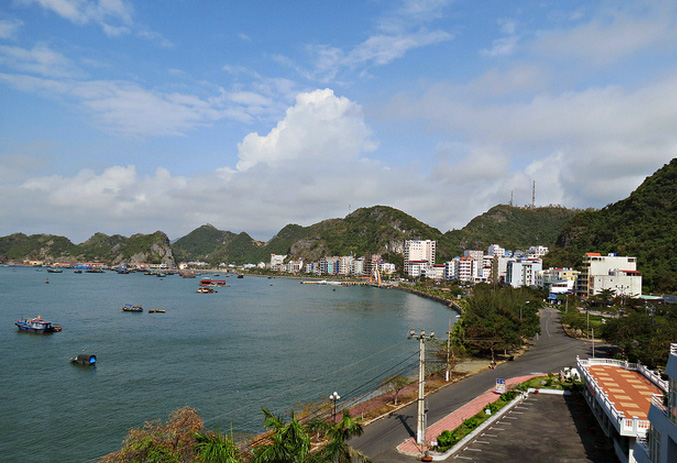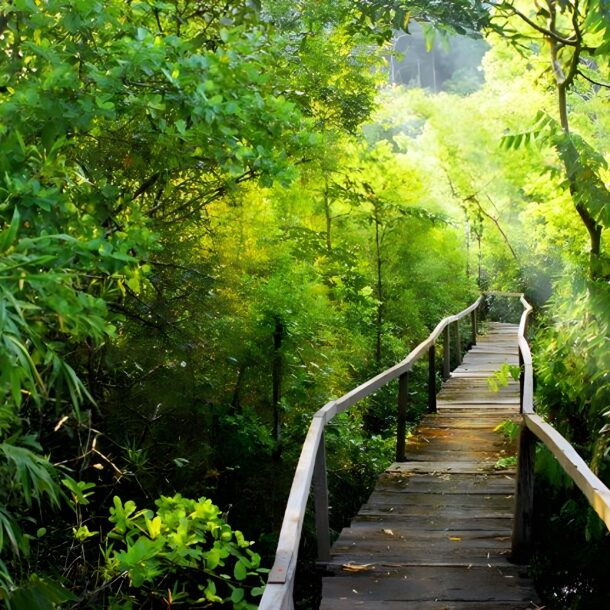
Introducing Cat Ba
Cat Ba Island district is an archipelago consisting of up to 367 large and small islands. Cat Ba is the name of the main island, which is approximately 100km² in size, located 30 nautical miles from Hai Phong port, in the southern part of Ha Long Bay, creating a cluster of islands and sea caves that enchant tourists. Visitors here can enjoy the fresh air and immerse themselves in the beautiful nature.
Cat Ba Island is a vast green carpet holding many mysteries and attractions. Cat Ba deserves to be the third biosphere reserve in Vietnam, which has been recognized by UNESCO as a World Biosphere Reserve. The total area of Cat Ba Biosphere Reserve is over 26,000 hectares, with 2 core zones (strictly protected and free from human impact), 2 buffer zones (allowing limited economic development combined with conservation), and 2 transition zones (economic development areas). Cat Ba Biosphere Reserve is a convergence area of tropical rainforests on limestone islands, mangrove forests, coral reefs, seaweed beds, and especially cave systems. Cat Ba also has the archaeological site of Cai Beo, belonging to the culture of Ha Long, where people have lived about 6475 – 4200 years ago.

The terrain is diverse, mainly limestone mountains with many fascinating caves interspersed with smooth, white sandy beaches where tourists can swim. The limestone mountains have an average height of 150m, with the highest peak being Cao Vong Peak at 322m above sea level.
According to a folk tale from the Northeast region, Cat Ba Island used to be the harem of the first man who came to explore and exploit the area. When he discovered the precious bay with many beautiful islands that later became known as Ha Long, it was also the time when he had to shelter many fates of widows and orphans, whose husbands never returned after voyages full of uncertainties. Then, to have time to explore Hon Gai and Bai Chay areas, he gathered all the women to live on this beautiful and prosperous island, isolated in Lan Ha Bay. Therefore, later the land of Bai Chay and Hon Gai was called “His Land,” and the other island was called “Island of the Ladies.” Through changes and vicissitudes, now only two place names remain: Cua Ong (Quang Ninh) and Cat Ba (Hai Phong) due to mispronunciations.
The climate on Cat Ba Island is cool, fresh, suitable for relaxation and convalescence. From Hanoi to Cat Ba, about 150km to the east, the most convenient way is by road or rail to Hai Phong, then from Hai Phong by speedboat or ferry to the island. Renting a tourist boat, you can cruise around Lan Ha Bay, visit over 100 different large and small beaches, and beautiful beaches with attractive names: Cat Co Beach 1, Cat Co 2, Da Bang Beach, Ben Beo Beach, Co Tien Beach…
Moreover, you can also go to Ha Long Bay, which takes only 4 to 6 hours to enjoy the scenery and visit unnamed beaches and fascinating caves that have not yet been listed for exploitation. Right on Cat Ba Island, you can visit Trung Trang Cave, Hoa Cuong Cave, Thien Long Cave, promising many interesting discoveries.
Cat Ba is an inseparable natural and ecological tourism cluster. Many archaeological relics from the Neolithic period, Ha Long culture, and traces of ancient Vietnamese people have been discovered here. Nowadays, Cat Ba has become a national park, preserving within it a pristine tropical forest ecosystem. Cat Ba Sea has up to 300 species of marine fish, 500 species of mollusks and crustaceans, many of which can be used as materials for producing fine arts and crafts such as abalone, dragon shrimp, pearl oyster, coral, clam shell, sea snail…
Quick Links
Get In Touch
Roza Palace
255 1/4 Street, Cat Ba Island, VietnamE-mail: help@rozapalace.com
Phone: +84983961280



